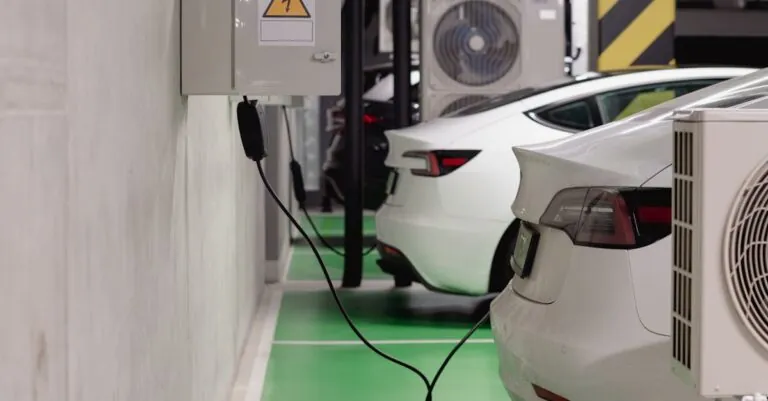Table of Contents
ToggleAs humanity reaches for the stars, spaceports are becoming the launch pads for our interstellar dreams. Imagine a bustling hub where rockets take off like airport shuttles, and astronauts grab their last cup of coffee before heading to infinity and beyond. Spaceport infrastructure isn’t just about launching rockets; it’s about building the future of travel, commerce, and exploration beyond our atmosphere.
Overview of Spaceport Infrastructure
Spaceports serve as critical hubs for launching spacecraft and supporting various activities in space exploration. With advancements in technology, these facilities evolve to accommodate increasing launch demands. Proper infrastructure includes runways, launch pads, vehicle assembly buildings, and mission control centers.
Launch pads feature ground support equipment, fueling systems, and transportation links for essential ground services. Vehicle assembly buildings enable the integration of launch vehicles and payloads before missions. Mission control centers monitor launches and maintain safety protocols during operations.
Amenities for astronauts and mission personnel play a vital role in the overall experience. Provisions for crew training and facilities for pre-launch preparations enhance mission success. Additionally, spaceports often incorporate research and development centers to foster innovation in space technology.
Local communities benefit from the economic opportunities created through spaceport operations. Employment growth, tourism, and technological advancements contribute to regional development. Governments increasingly recognize the importance of spaceports as an investment in future infrastructure.
Safety measures, including risk assessments and environmental impact evaluations, guide spaceport design. Advanced technologies and engineering practices ensure that facilities meet regulatory requirements. Operational procedures continuously adapt to new findings in aerospace research.
Globally, various nations invest in developing spaceports to compete in the new era of commercial space travel. Locations range from remote areas to urban centers, each chosen for strategic advantages. These developments signal a transformation in humanity’s approach to exploring and utilizing outer space.
Importance of Spaceport Infrastructure
Spaceport infrastructure plays a vital role in advancing space exploration and utilization. It underpins the operational efficiency necessary for regular launches and the successful execution of missions.
Economic Benefits
Spaceports create significant economic opportunities. Local economies thrive as jobs in construction, operations, and support services emerge. A 2022 study revealed that spaceport operations can generate over $1.4 billion annually for surrounding regions. Increased tourism from space-related events also contributes to local businesses. Government investments in spaceport infrastructure stimulate small business growth and technological innovation. Employment figures often rise dramatically in areas surrounding new spaceport developments.
Environmental Considerations
Environmental impacts influence the design of spaceport infrastructures. Comprehensive environmental assessments ensure compliance with regulations and minimize ecological disturbances. Strategies such as noise mitigation and air quality monitoring protect local ecosystems. Employing sustainable practices during construction can reduce carbon footprints. Emerging technologies, such as reusable launch vehicles, contribute to lower environmental impacts, addressing concerns over traditional rocket launches. Multiple stakeholders must collaborate to ensure that spaceport infrastructure supports both exploration goals and ecological sustainability.
Types of Spaceport Infrastructure
Spaceports consist of various infrastructures that enhance launch capacities and support mission success. They include launch pads, control centers, and support facilities, all essential for efficient operations.
Launch Pads
Launch pads form the core of any spaceport. Equipped with ground support equipment, they provide the necessary systems for rocket launches. Each launch pad features fueling systems, ensuring rockets are ready for liftoff. Safety mechanisms protect personnel and equipment during the launch process. Various designs accommodate different rocket sizes, allowing for flexibility in operations. For example, a purpose-built pad for heavy-lift vehicles can handle larger payloads efficiently.
Control Centers
Control centers oversee the entirety of launch operations. These facilities monitor every aspect of a mission, ensuring adherence to safety protocols. Equipped with advanced communication systems, they facilitate real-time updates between support teams and crew members. Personnel in these centers analyze data during launches to make informed decisions quickly. Coordination with other entities, such as weather stations, further enhances operational success. The integration of technology enables accurate tracking of all rocket activities, crucial for mission success.
Support Facilities
Support facilities provide essential resources for astronauts and mission personnel. These spaces include crew training centers and pre-launch preparation areas, designed for effective training simulations. Maintenance facilities ensure all equipment remains operational, contributing to safety and reliability. Furthermore, research and development labs foster innovation in space technology, driving advancements in rocket design. On-site accommodations for crew members support their needs before launches, improving focus and readiness for missions. Such facilities enhance the overall operational efficiency of spaceports, bolstering success in space exploration endeavors.
Challenges in Developing Spaceport Infrastructure
Developing spaceport infrastructure presents several challenges that require careful navigation. Regulatory hurdles and technological limitations significantly impact the progress of these facilities.
Regulatory Hurdles
Multiple regulations govern the construction and operation of spaceports. Local, state, and federal agencies oversee safety standards and environmental assessments, adding complexity to planning and development timelines. In many regions, securing permits and addressing community concerns presents further obstacles. Coordinating between various governmental bodies can slow down approval processes. Additionally, compliance with aviation and aerospace regulations ensures safety but often delays project initiation.
Technological Limitations
Technological limitations also pose significant challenges in spaceport development. Each new launch system necessitates specialized infrastructure and support equipment, which can be costly and time-consuming to develop. Maintaining compatibility with rapidly evolving rocket technology requires continuous updates to existing facilities. Innovations in reusability and efficiency demand advanced designs and construction techniques, complicating initial projects. Moreover, ensuring that infrastructure can adapt to future technologies adds layers of difficulty in planning and execution.
Future of Spaceport Infrastructure
Spaceport infrastructure is evolving rapidly to meet the demands of increased aerospace activity. Innovations and global trends shape this future, enhancing design, functionality, and operational capabilities.
Innovations in Design and Technology
New technologies streamline construction and improve operational efficiency in spaceports. Modular designs enable faster assembly, allowing for quicker adaptation to launch requirements. Integration of autonomous systems enhances safety and reduces the risk of human error during operations. Sustainable materials also gain traction, promoting eco-friendly practices without compromising performance. The advent of advanced digital infrastructure supports real-time data analysis, optimizing launch schedules and resource allocation.
Global Trends in Spaceport Development
Investment in spaceports grows worldwide, reflecting the increasing commercialization of space. Countries like the United States, India, and the United Kingdom lead in spaceport development initiatives, each focusing on regional advantages. Partnerships between private companies and government agencies foster innovation and shared resources. Local communities experience revitalization through job creation and economic activity driven by spaceport operations. Finally, international collaboration promotes standardized regulations and safety protocols, ensuring a cohesive approach to global space exploration efforts.
Conclusion
Spaceport infrastructure is set to redefine humanity’s relationship with space. As these facilities develop into bustling hubs for exploration and commerce, they promise to enhance not only the efficiency of launches but also the overall experience for astronauts and mission personnel. The economic impact on local communities is significant, creating jobs and stimulating growth.
With ongoing advancements in technology and design, spaceports are becoming more sustainable and capable of meeting rising demands. As nations invest in this vital infrastructure, the collaborative efforts among governments and private sectors will pave the way for a new era of space exploration. The future looks bright as spaceports emerge as key players in humanity’s quest beyond Earth.







